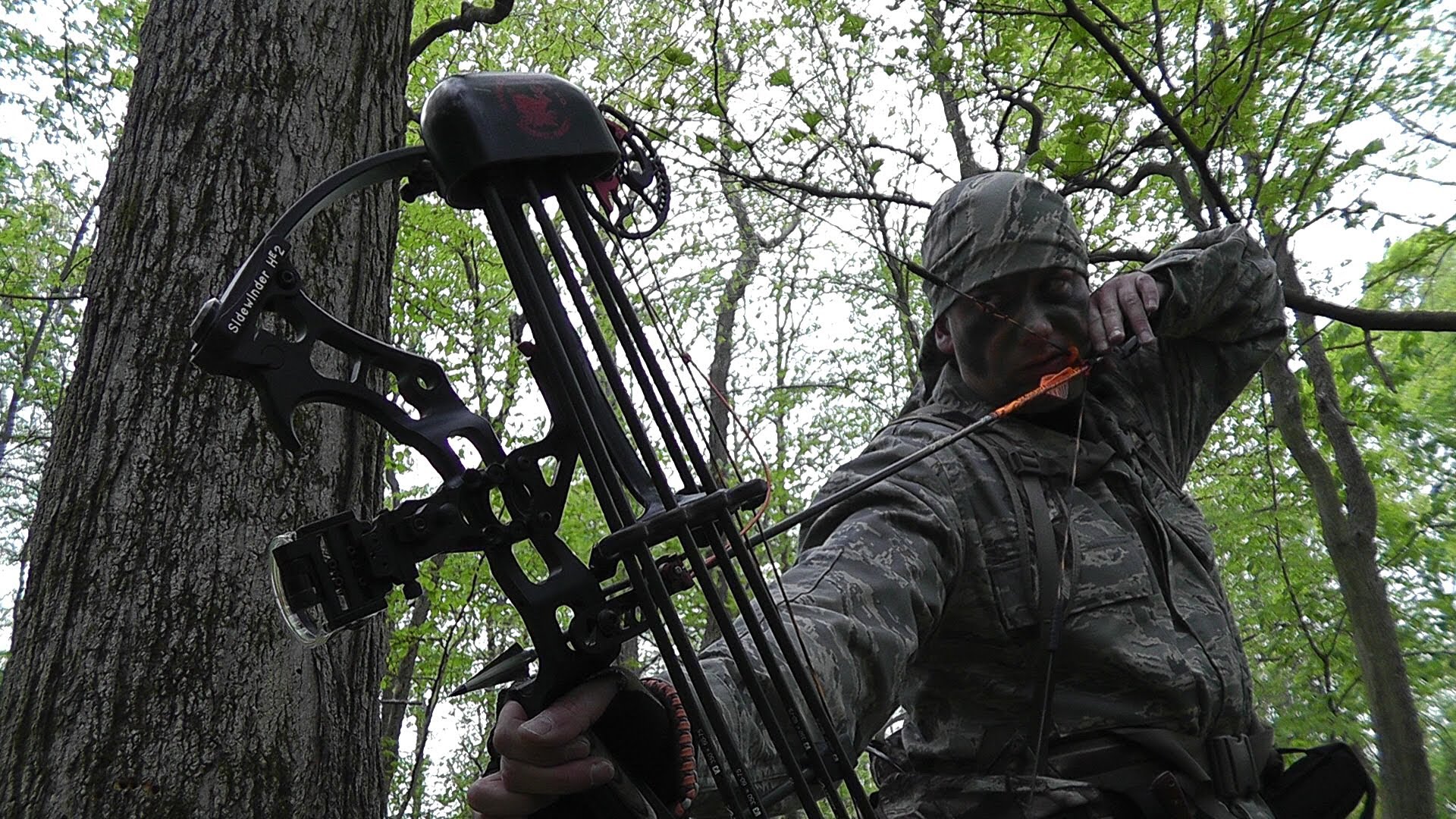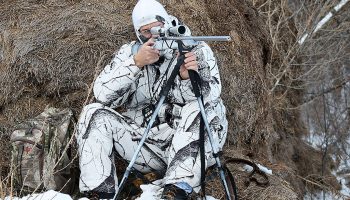Whether you’re looking to upgrade for the coming season or are just getting into archery, the information below will help you find the perfect bow to fit your needs.
Contents
Cam Selection
A lot has been written about cams (or wheels) over the years. The different styles, shapes and individual features are numerous, but they generally can be narrowed down to five distinct types: round wheels, single cams, dual cams, 1.5 hybrid cams and binary cams. Each have their own set of characteristics that dictates their best application. Factors that make an archer choose a particular cam style over another are speed, comfort, tunability, quietness and accuracy.
Round-wheeled bows are the slowest of all compound bows, but they are still with us today for a reason – they are smooth and accurate. Round wheels are reasonably quiet, vibrate very little and are easy to tune. Due to their rainbow-like trajectory, they are not a common choice for hunting applications.
Single cams are matched to a round idler wheel. Their popularity has been such a success that virtually every bow manufacturer today produces a single-cam bow. They are very easy to tune, since there is only one cam that rolls over.
Dual cams typically offer more speed than a single cam, but also require more tuning and maintenance. Both cams need to be synchronized to maximize the bow’s potential.
The 1.5 hybrid cams are a newer style of cam. They are a combination of both a dual cam and a solo cam. The speed of the hybrid cam is oftentimes comparable to dual cams. It functions the same as a solo cam, where the idler wheel is replaced with another cam. The addition of the second cam offsets the movement of the nock as compared with a solo cam.
Binary cams are similar to dual cams, except both cams are slaved to each other. This means that each cam rotates the same amount when drawing and shooting, making a binary-cam system virtually maintenance-free after the initial tune.
Which Bow is For You
Selecting the right bow is a personal thing, and the decision will depend a lot on what you will be doing with it. Here are a few things to look for when deciding on a compound bow:
Axle-to-axle length (ATA)
This is the distance between the axles of the cams (or cam and idler wheel). Much like the balancing pole a tightrope walker uses, a longer ATA will make it easier to hold the bow in a steady, vertical position. However, if you’re going to be hunting from a ground blind or treestand, or stalking through thick brush, a bow with a shorter ATA will be easier to maneuver. Most hunting bows have an ATA between 31” and 34”.
Brace height
Brace height is the distance from the string’s resting position to the groove in the bow’s grip. Brace height influences a bow’s power stroke (the distance the string travels) and greatly affects arrow speed. A shorter brace height increases arrow speed, but it also magnifies any errors in the archer’s form. A longer brace height is slower, but since the arrow is in contact with the string for less distance, errors in form are not as noticeable. 6” to 7” brace heights are most common.
Bow weight
As a general rule, heavier bows are easier to hold steady, but can fatigue an archer more quickly. Lightweight bows can take more practice to shoot accurately, but are also easier to carry on hunting trips. The average hunting bow weighs around 4 to 4.25 lbs. without accessories.
Adjustability
Again, make sure your bow can be adjusted to your draw length and weight. Most compound bows have draw-weight ranges of 10 to 20 lbs. – you’ll see a lot of 60- to 70-lb. and 50- to 70-lb. bows – but if you’re growing or just getting into archery, there are an increasing number of bows with even higher draw-weight adjustability, letting you start out low and work your way up to your target draw weight. Likewise, most bows have a draw-length range of approximately 4-6”. If you’re done growing, then this is fine, as your draw length will not change. For youths, a bow with a larger draw-length range will be able to adjust as they grow.
Understanding the different features of a bow and applying them to your specific hunting conditions and need makes selecting the right bow for the job much less difficult.
Best High End Crossbows – Top 5 Crossbows
The selection to determine my top 5 crossbows was made on few specific criteria to determine the exact ready-to-shoot crossbow. I wanted to make sure I had the best value for the price. There is no point to invest that amount of money if you don’t have what you paid for.
Therefore, the technology included in the crossbow came as my first criteria. Small details come at a price but make a huge difference on the field. This point encompasses, the structure of the stock, the flight track, the accessories to dampened the sound and the technology related to its precision.
Second, quality of the scope. Is it already sight-in out of the box or many manipulations are needed to obtain great groupings in few shots.
Thirdly, the maneuverability of the crossbow. Its general design, compactness, how easy cocking the crossbow and safety toward movement while aiming at moving targets.
Finally, the overall result of the accessories included in the package. This point includes the quiver, the bolts, the crossbow case, wax, etc…
Now that you know how I based my selection, here are my best high-end crossbows. I also included different models otherwise compound crossbows would be all over the place according to me.
Excalibur Micro Suppressor Crossbow
Awards: Best recurve crossbow for its durability and reliability
They made all the modifications necessary on the Excalibur Micro Suppressor to make this crossbow almost without any cons, except for the draw weight and its specific bolts length. In past years, noise and total length were main issues for recurve crossbows. Excalibur understood what customers really wanted from a recurve crossbow. They wanted more durability, a more compact design and almost no sound and vibrations when shooting.
Parker Tornado XXT Crossbow Package
Awards: Look rough made tough for best durability over the years
Made by Americans for Americans. The first thing to say about Parker crossbows it’s there are more efficient than first at the beauty contest. They have basic shapes and no fancy design and it’s exactly what you want from them. They are performance-oriented products, not focused on their look. However, they are definitely not the worst and they are making a lot of changes to improve their designs. Quality and durable products, it’s what you can expect from Parker.
Barnett Razr Ice Crossbow
Awards: Best Ready-to-hunt crossbow package
This is the real ready-to-hunt package! The Razr ice has it covered for you so you can shoot and harvest your target. A great crossbow for maneuverability, precision and easy to use for beginners or more experienced shooter. Barnett loaded this model with all the good stuff. With almost no cons the Barnett Razr Ice Crossbow offers according to me, one of the most exciting experience for its category.
Browning one six two Crossbow
Awards: Best high-end crossbow for beginners.
A new player on the crossbow market but clearly not a new player in the world of hunting. Browning is a well-known brand in America and the good news is, they brought the same quality into their crossbows as they did in their guns. Browning aligned themselves with Barnett to ensure their entrance into the market at a lower risk.
Tenpoint Carbon Nitro RDX Crossbow
Awards: Top notch shooting experience and maximum precision without many modifications
The most expensive of my ranking but amazing ballistics numbers. The precision obtained with the Carbon Nitro RDX crossbow is stunning and this, without modifications. Tenpoint has no need for an introduction, their products always come with high standards of quality. This reverse draw limbs crossbow will give you one of the smoothest shooting experience you will ever have.
What Makes a Recurve Bow Great For Hunting?
I don’t want to simply “force” some specific bows down your throat; I want you to actually understand why it is that I’ve chosen the bows listed above. With that in mind, here are the things that make a recurve great for a hunter.
It needs to be quiet
This is likely the most important thing to keep in mind. Nothing is more annoying than setting up for that perfect shot after an hour or two of tracking or luring your prey, only to have them run away due to the noise generated by drawing the string on your bow. So how do you solve this?
By choosing a bow that is specifically designed to minimize this kind of noise. These will include limbs made from specific, “quiet” material. They will be well tuned. They will include dampners or other elements designed to silence the string.
The draw weight needs to be just right
This one is a bit of a variable, but nothing we can’t handle.
I strongly recommend that you never use a recurve bow for hunting unless it has a drawing strength of 40 pounds or more. The reason being that, during hunting, you will want your arrow to pierce your prey and penetrate the body deeply enough. Unless your recurve has a draw weight of 40 pounds or more, and especially if you are shooting from further than 15 yards away, chances are you will just injure the animal without actually killing. It will then run away, needlessly suffer, and you’ll even lose your arrow. That’s not all though.
You need to choose a bow with a draw weight that you can handle. When hunting, you often need to draw your bow and then hold for a minute or longer before actually firing. If the draw weight is too much for your muscles, you will start to shake and your aim will suffer greatly.
It needs to be long
This one is simple: the longer the total lengh of the bow (from tip to tip), the more accurate your shots will be. How long exactly?
The best recurve bow for hunting will have a minimum length of 58 inches. The longer the better. You will notice that almost all of the recurves in the list above have a length of 60 or more inches – you now understand why.
Ease of transport should be considered
This may not seem like an issue for you now, especially if you have never used a bow before, but believe me – transporting a 60+ inche bow in a safe manner (you don’t want the limbs to get bent or worse – broken, do you?) can be a real hassle. Now, if you have a big enough car to transport your bow easily while avoiding damage to it in route, that’s great. Otherwise…
You need a takedown recurve bow for hunting. In case you didn’t know, a takedown bow is one where you can quickly detach the limbs from the riser by unscrewing a few screws. This makes storing and transporting your bow so much easier.






